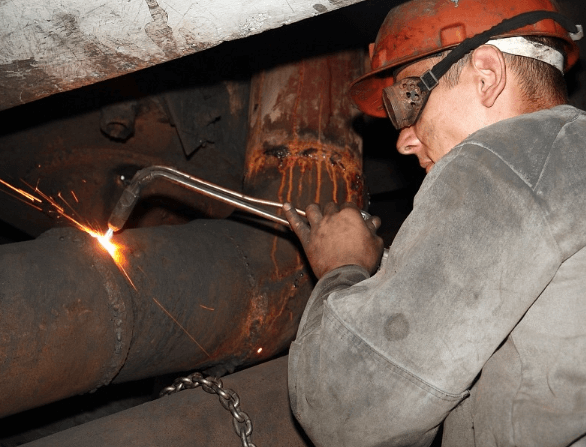What is the Best Shielding Gas for TIG and MIG Welding?

Shielding gas is an inert or semi-inert gas that prevents the welding metals from reacting with other elements in the atmosphere, thus protecting the weld from getting damaged due to oxidation.
The composition of sheilding gases is essential when welding. One wrong constituent and the whole weld bed gets damaged, requiring further repairs. It can also hamper the arc’s heat generating capability. So choosing the right inert gas components is essential.
What is TIG Welding?
Tungsten Inert Gas (TIG) welding, also known as gas Tungsten Arc Welding (GTAW), is an arc welding process that uses an arc formed by a non-reacting tungsten electrode. When electricity is passed through Tungsten, it heats the metal due to tungsten’s high characteristic resistivity. This forms the basis of the heating torch.
The process uses inert elements like Argon and Helium as shielding agents, which displaces the atmospheric gases surrounding the space between the two metals to prevent them from reacting. Use of the filling rod is optional, and when used, it is often fed into the molten metal pool. An AC power source generally powers the TIG arc.
What is the Best Shielding Gas for TIG Welding?
Argon is one of the best shielding gases for TIG welding. It is more widely used than Helium because it is heavier compared to Helium, thus producing better shielding. Being heavier than air, it displaces air from the surrounding of the weld pool, thus preventing contamination of the molten metal by Oxygen and Nitrogen in the air.
It is suitable for fusing Aluminum and other non-ferrous metal surfaces and is preferred when using alternating current-powered arcs. Argon works exceptionally when melding flat metal surfaces. Mixing Helium with Argon increases its heat transfer capabilities, providing better and faster welding.
What is MIG Welding?
Metal Inert Gas (MIG) welding is a fusion welding process in which the arc and weld zones are developed in a protective gas shielding. It was invented to fuse Aluminum and Magnesium metals, replacing the use of flux. Fluxes were used in the 1900s when binding metal surfaces. The flux is used to corrode the metal if the worker ever forgot to remove it.
The role of inert gas in the MIG process is to protect the fusing point from atmospheric Oxygen, Nitrogen, and water vapor. Otherwise, they react with the weld metals making them porous and brittle. MIG is also known as MAG (Metal Active Gas) welding since Carbon Dioxide is an active gaseous compound that tends to oxidize the weld bed.
What are the Best Shielding Gases for MIG Welding?
Shielding agents such as Argon, Carbon dioxide, and Helium are used in the MIG process. For Aluminum, Nickel, and their alloys, Argon is used. And a mixture of Argon and Helium is used for fusing Copper and its alloy.
For most cases, Argon is used because it works effectively as a shielding agent for almost every industrial instance. In cases where Argon is unsuitable, Helium and Carbon Dioxide are used. Helium creates an erratic arc and thus is always used mixing with Argon.
Carbon Dioxide is widely used in its pure form for the MIG welding of carbon and low alloy steel. Higher speed, greater joint penetration, and lower cost are general characteristics that make it a popular shielding agent.
Conclusion
Shielding gases are very vital for the proper fusing of the metal bed. It creates a non-reactive layer over the molten metal so that the metal does not form compounds with either Oxygen or Nitrogen. Oxygen can be very damaging to the weld. It oxidizes the metals, forming different compounds, thus completely disintegrating the bond between the molecules. The weld becomes highly brittle, requiring repairs and adjustments. So, choosing the correct shielding gas composition is vital for TIG and MIG welding.








